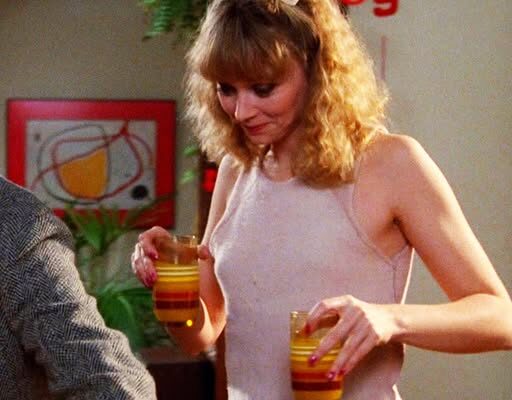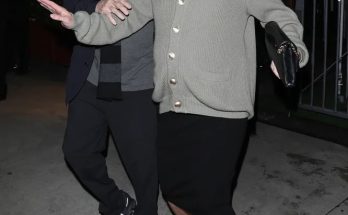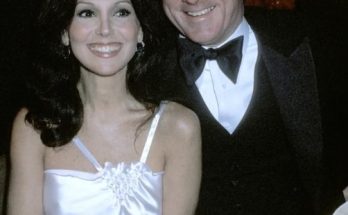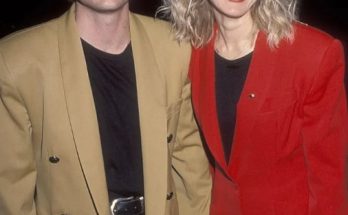What happens when Michael Keaton’s crazy, scene-stealing energy is combined with Henry Winkler’s suave charisma? You earn hilarious gold!
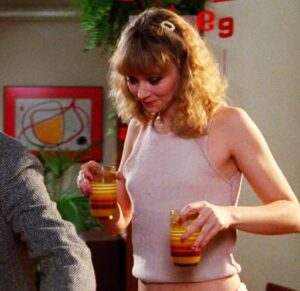
In addition to being Ron Howard’s first feature film, Night Shift (1982) marked the start of a cult classic. Shelley Long adds her irresistible charm, Winkler and Keaton’s electrifying chemistry lights up the screen, and if you look closely, you could even see a young Kevin Costner amidst the mayhem.
The true surprise, though? The enduring “magic in the kitchen” moment of Shelley Long. Are you prepared to explore the hidden meanings of this classic movie? Let’s begin!
From mortuary to chaos
Night Shift, a quirky comedy classic released in 1982, introduced viewers to Michael Keaton’s enduring charm and demonstrated Ron Howard’s developing directing skills.
The film, which takes place in a morgue in New York City, centers on the unexpected alliance between mild-mannered night shift worker Chuck Lumley (played by Henry Winkler) and his new, quirky, and extremely ambitious coworker Bill Blazejowski (played by Michael Keaton).
The two end up in unexpected and humorous situations after they discover an unusual business opportunity: using the morgue as a base for a posh escort service.
The remarkable chemistry among the three characters is what really sets this film apart, not just the witty humor. Their characters are all quite likable, which adds to the enjoyment of watching.
It would be impossible to discuss Night Shift without bringing up Michael Keaton.
Even though not many people recall Michael Keaton as a wild and crazy kid, Night Shift captures him perfectly in the 1980s: silly, humorous, and unquestionably charming. Having only starred in a B-comedy and the CBS comedy series Report to Murphy, Keaton was almost unknown at the time of the comedy film, which was his breakthrough performance and first significant leading role.
He remembers, “I don’t know how many times I had to go back in and audition.” “All that happened was callback after callback.”
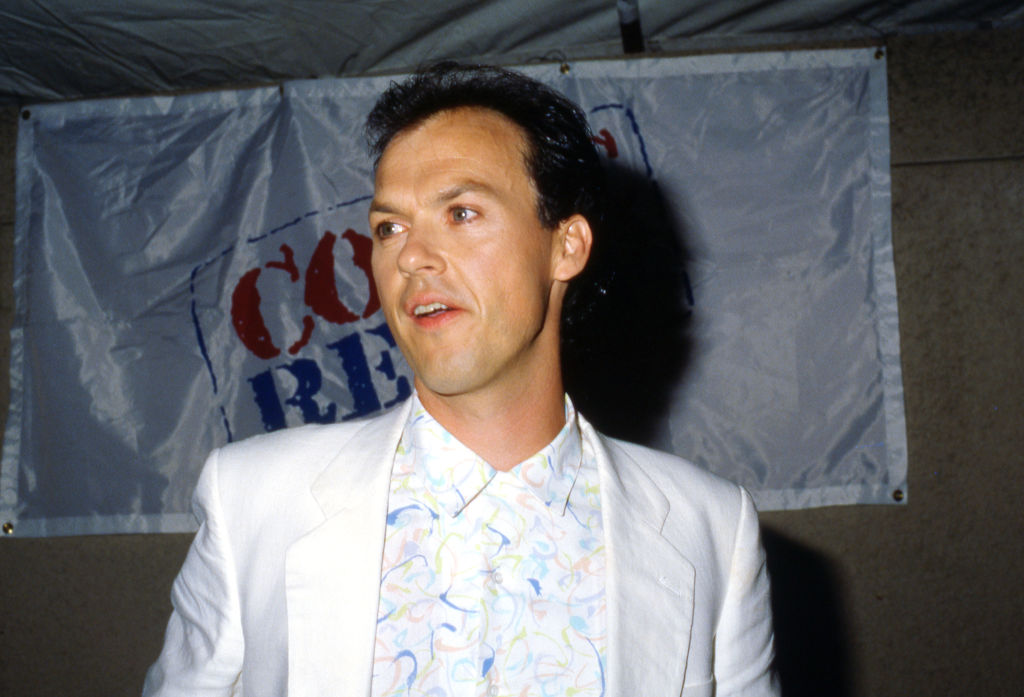
Ultimately, Keaton was able to persuade the producers and writers. Keaton was excellent as Bill “Blaze” Blazejowski, with his wide Irish face, thinning brown hair, darting green eyes, and quick-talking manner. His intensity and timing were perfect, but there was also this additional detail:
Keaton later remarked of his ascent to fame, “I came along just at the time when the changeover from television to film actors was becoming possible.”
Michael Keaton would turn up the music and blast Bruce Springsteen, particularly “10th Avenue Freeze-Out” from the Born to Run album, in order to truly get into the swing of his role.
He remembers, “I deliberately went to see it alone on opening day.” It was fantastic, and I wanted to sit in the center of the theater in the afternoon. To be honest with you, I am at a loss for words.
The man who assisted Keaton in stealing the film
When Ron Howard chose Keaton for Night Shift, he had struck gold.
Keaton outperformed the more seasoned Henry Winkler, who was already well-known on television for his portrayal of “The Fonz,” in scene after scene. The door to Hollywood opened wide open for Keaton as reviews praised his performance. However, without Henry Winkler’s quiet but crucial assistance, Keaton’s success—and his whole film career—might not have begun.
In an interview with the Boston Globe, Ron Howard disclosed that Henry was given the choice between the two parts and chose the more subdued one.
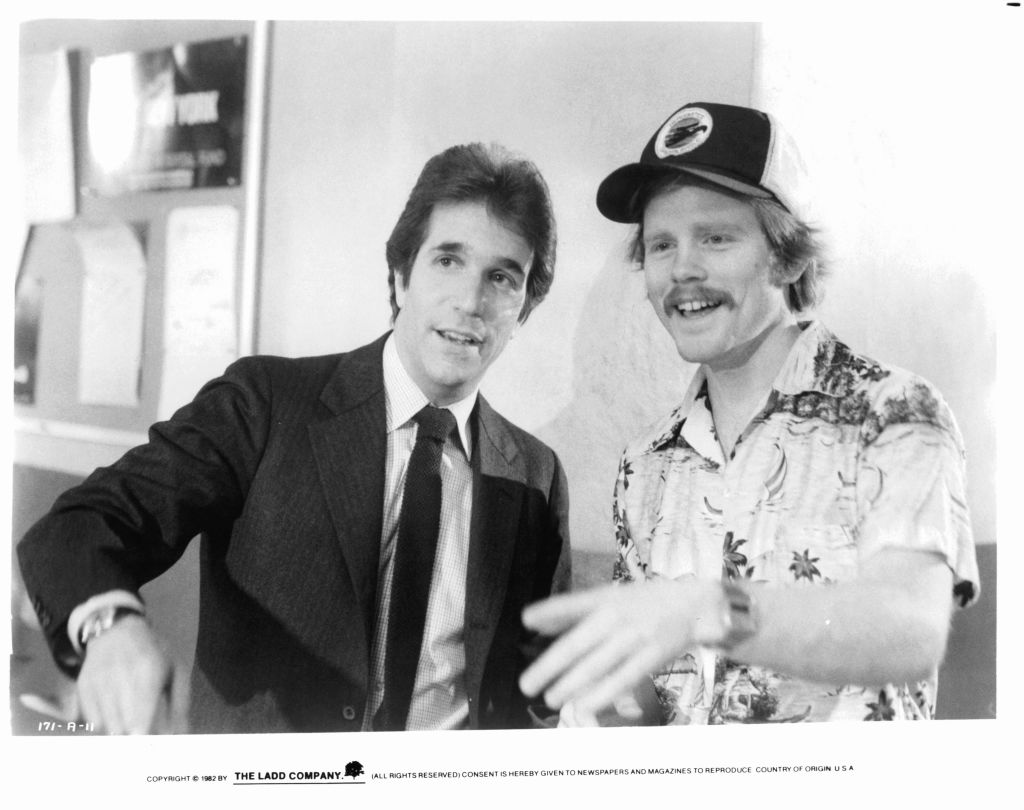
Then he assisted Michael in stealing the photo. He offered Michael many options. He would say things like, “I know (you’ll get laughs) if you take this routine one step further,” to Michael.
In Night Shift, Henry Winkler purposefully contrasted his iconic, tough-guy character, Fonzie, with the timid morgue director. “I thought I’d play Richie Cunningham for once,” he wrote on Twitter.
Keaton wasn’t liked by Henry Winkler.
Given their obvious chemistry, it’s surprising that Henry Winkler and Michael Keaton never worked together again after Night Shift. They had a humorous, memorable, and well-balanced on-screen dynamic.
Their early relationship during Night Shift’s filming may be the cause of their lack of subsequent collaborations. Henry wasn’t totally sure he wanted to work with Michael when they first read together. “The guy’s talented, but I don’t know if I’m comfortable working with him,” Howard said after giving it some thought.
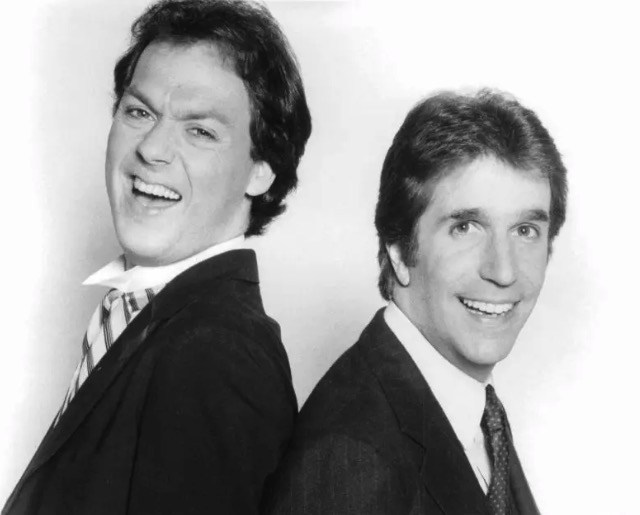
He was reassured by Ron Howard that this unease was beneficial since it reflected the relationship between their characters in the movie, which showed that Chuck was uneasy with Bill. Their early tension gave their on-screen relationship a real, unbalanced texture, but it eventually subsided.
Well-known people who nearly got the legendary role
Mickey Rourke and Kurt Russell are rumored to have tried out for the part of Bill Blazejowski. Furthermore, Michael Keaton wasn’t the first pick, according to Ron Howard. Additionally, they had reached out to John Candy in an attempt to cast Bill Murray, Dan Aykroyd, and John Belushi. But none of them were interested, either because they didn’t want to pursue it or because they thought the part was too minor.
One of the writers, Lowell Ganz, told me after seeing Michael’s work that “Keaton is going to be a star for somebody, and he might as well be a star for us,” Ron Howard revealed.
Scene improvised
You can’t help but think that Michael Keaton was making stuff up as he went along in Night Shift since he has that innate comic brilliance that makes impromptu, funny situations come to life. When a blind man asks Winkler and Keaton for spare change, it’s one of the greatest improvised scenes. What does Keaton say? He sends a cheque to the man. The original Keaton!
In the film, did you see Ron Howard?
Ron Howard’s first film as director was a huge success, earning a healthy $21,095,638 at the box office. However, the former child actor was compelled to make his own appearance. You can see Ron and his wife, Cheryl, kissing in front of Chuck’s (Henry Winkler) apartment complex if you look attentively.
Ron Howard himself plays the obnoxious saxophone in the subway scene. Naturally, a Ron Howard movie wouldn’t be complete without an appearance from his brother Clint Howard, who portrays the film’s eccentric character Jeffrey.
Kevin Costner appears
There are many well-known characters in some very early roles on Night Shift!
In a fleeting appearance, Kevin Costner plays a frat boy at the morgue party. Although he doesn’t speak, you can see him hanging out while Michael Keaton performs, holding a bottle on his head, wearing a checkered shirt, and a college cardigan tied around his waist.
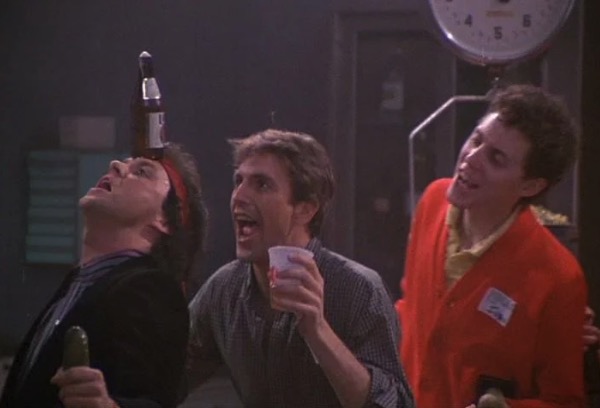
Then there is Shannen Doherty, who makes her debut in a feature picture with a single line as a “Blue Bell” (similar to a Girl Scout) in an elevator sequence. Unexpectedly, these brief appearances by future celebrities give this oddball classic a bit more joy.
The origin of a famous song
Did you know that the iconic song “That’s What Friends Are For” was first heard on Night Shift? Rod Stewart originally recorded it for the 1982 soundtrack, but when Dionne Warwick, Elton John, Gladys Knight, and Stevie Wonder joined forces in 1986, it became a worldwide smash. Additionally, their rendition collected more than $3 million for AIDS research in addition to skyrocketing to the top of the Billboard charts.
The movie opens with the catchy Night Shift theme by Quarterflash and includes timeless songs like Van Halen’s “You Really Got Me” and the Rolling Stones’ live rendition of “Jumpin’ Jack Flash.”
Playing a prostitute was not Shelley Long’s preference.
For those who haven’t seen or remembered Night Shift, Shelley Long portrays Belinda, a kind but tough sex worker who lives next door to Henry Winkler’s character, Chuck. Belinda links up with Chuck and Bill (Michael Keaton) after her pimp is slain, and they agree to assist her by running her company in an absolutely crazy manner.
Following her role in Caveman (1981), Shelley Long had gained the admiration of Ron Howard. But she was in California doing another film when he wanted her for Night Shift (1982). Howard persuaded her to come to Hollywood for a brief two-day vacation in spite of this.

The charming actress was requested to come back the next day to see Henry Winkler after she tried out for the part of Belinda, the female lead, during that period. Despite her initial reluctance to play a prostitute, Long eventually agreed to the part after spending some time researching it.
She arrived at our house looking like a hooker, read to Henry, and immediately impressed us. Even on the videotape, their moments were already being prepared, Ron remarked.
“The happiest, healthiest hooker…”
Comedies about prostitutes were surprisingly popular in the early 1980s. The Best Little Whorehouse in Texas, a film based on the Broadway musical and starring Burt Reynolds and Dolly Parton, also came out around the same time Night Shift. Tom Cruise made a name for himself the next summer in the film Risky Business, in which he converted his parents’ home into a brothel.
“The happiest, most wholesome hooker you’ll ever see on screen” is how critics described Shelley Long’s portrayal of Belinda, a prostitute who wins Chuck over. Some even joked that she could be the leader of a Girl Scout troop.
The iconic scene with the egg
One of the many amusing moments in Night Shift is when Shelley Long’s character, Belinda, prepares breakfast for Chuck. Henry Winkler’s response is anything but Fonz-like in the scene where Chuck first witnesses Belinda cooking in her panties. It’s a great moment!
Chuck then responds that he wants scrambled eggs when Belinda asks what sort he wants. She is obviously preparing fried eggs when she begins to cook.
However, she somehow dumps scrambled eggs onto their plates after the eggs are done! She clearly changes things up when Chuck speaks to her, but really, who is paying attention to the eggs when Shelley Long is delivering so much charm?
The character of Shannen Doherty
Another error from the movie that might have gone unnoticed by anybody who appreciates details is this one: Chuck calls Shannen Doherty’s role a “Bluebell” when, in fact, she is billed as a “Bluebird.”
He must have confused flowers for birds.
“He likes a part of my anatomy.”
Shelley Long wasn’t exactly excited to be seen in her underwear, but her character Belinda was okay with it. “It was difficult for me when the cameras weren’t rolling,” she said.
She also asked her husband, in jest, what he thought of her roaming around in her underpants during Night Shift. She laughed and remarked, “He didn’t mind me running around in my skivvies—that’s a part of my anatomy he likes.”
The subway error
The morgue in Night Shift was really built on a specially constructed set in Hollywood, California, although many of the scenes were shot in New York.
Many scenes, such as the one in which Bill locates potential customers outside cinemas and the one in which Chuck, Bill, and Belinda flee at the conclusion, were filmed in Manhattan’s Times Square.

For me, Trading Places is the greatest and one of the most underrated Christmas movies of all time.
It’s almost criminal we never got to see more of Eddie Murphy and Dan Aykroyd working together, they had such great chemistry. And let’s not forget 25-year-old Jamie Lee Curtis — the smoking hot and a phenomenal actress delivered some unforgettable scenes.
But did you know that several hilarious moments in the film happened completely by accident?
If any other actors had been cast in Trading Places, it simply wouldn’t have worked. It’s like a rare alignment of the planets — everything came together perfectly. From Eddie Murphy’s comedic genius to Dan Aykroyd’s sharp performance and Jamie Lee Curtis’s unforgettable presence at just 25 years old (yes, she was smokin’ hot), this movie is nothing short of brilliant.
Released nearly 40 years ago, it remains a timeless classic. Can you believe that? Four decades later, you’d think a movie of that age would feel dated, yet Trading Places still feels fresh every time. Many fans even make it a Christmas tradition, proving its enduring charm.
Stay tuned as we dive into behind-the-scenes stories, unexpected bloopers, and little-known facts that make Trading Places the comedy masterpiece it is today.
f you haven’t seen Trading Places, it’s a classic comedy from 1983 about a wild social experiment. Two rich brothers, Randolph and Mortimer Duke, make a bet to see if a person’s success is based on their environment or their personality.
To test their theory, they swap the lives of their spoiled, wealthy employee, Louis Winthorpe III (Dan Aykroyd), with a fast-talking street hustler, Billy Ray Valentine (Eddie Murphy).
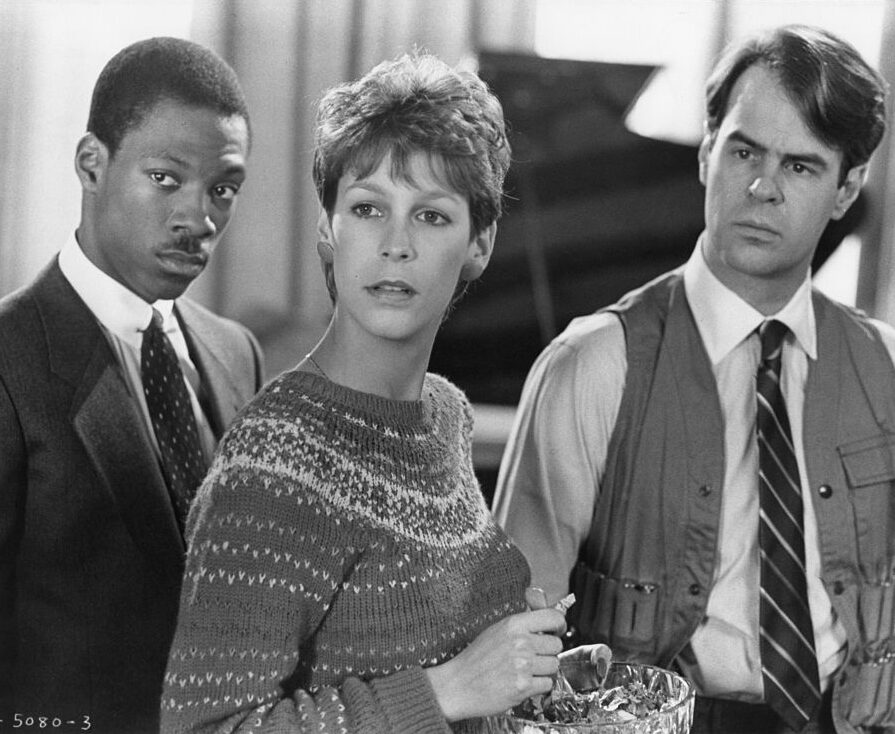
The Dukes completely wreck Louis’s life — taking away his money, job, and status — and hand it all to Billy Ray. But when Louis and Billy Ray figure out they’re being played, they join forces with a clever woman named Ophelia (Jamie Lee Curtis) to get back at the Dukes and teach them a lesson they’ll never forget.
It’s a sharp, funny movie about class, greed, and what really makes a person who they are. One of its deeper messages — being careful about judging others —resonates just as much today.
A tennis game inspired the screenwriters
Trading Places was written by Timothy Harris and Herschel Weingrod, and the idea came to life in the early 1980s when Harris met two wealthy (and incredibly cheap) brothers who couldn’t stop competing with each other.
Screenwriter Timothy Harris shared that he used to play tennis with two brothers who were both doctors. They were incredibly annoying to play with because they constantly argued, not just about the game, but about everything.
Harris got the idea to turn this dynamic into a story and pitched the concept of brothers arguing over the “nature versus nurture” debate to his writing partner, Herschel Weingrod. The rest, as they say, is comedy gold.
A bikini picture changed everything
The story was originally meant to star comedy legends Richard Pryor and Gene Wilder.
When that didn’t work out, director John Landis brought in Dan Aykroyd, who he’d worked with before, and Eddie Murphy, who was just starting to make waves in Hollywood with this being only his second movie.
”The only character in the script I had a problem with, because she’s such a fantasy, is Ophelia. The classic ‘hooker with a heart of gold’ — she’s such a fantasy that I thought how the fuck am I going to get away with this?’,” Landis said.

John Landis made a daring move when he approached Jamie Lee Curtis for Ophelia. He had her in mind for the role, but the studio wasn’t on board at first. Back then, Curtis was primarily known for her scream-queen roles in horror films.
It would be Curtis’ first major big-budget film, a real A-list opportunity that gave her the chance to show she could do more than just outrun a slasher in a hockey mask.
“Nobody else wanted me. I guarantee you, John Landis was the only person who said, ‘She’s going to play this part.’ And without that moment I wouldn’t have now the career that I get to have,” Curtis shared.
John Landis later admitted that Curtis’ decision to do a topless scene helped change the minds of the Paramount executives. After seeing a photo of her in a bikini, they were convinced it would help make the movie more marketable.
John Landis didn’t know who Eddie Murphy was
When the movie was being cast, director John Landis didn’t even know who Eddie Murphy was yet. Murphy’s breakout film 48 Hours (1982) hadn’t been released, but the studio had already previewed it and knew he was a star in the making.
Landis recalls being asked, “What do you think about Eddie Murphy for the role of Billy Ray Valentine?” To which he humorously responded, “Who’s Eddie Murphy?”
The movie played a huge role in making Eddie Murphy one of the highest-paid and most sought-after comedians in Hollywood. Murphy mentioned that he was paid $350,000 for his role, though some reports claimed it was as high as $1 million.
He also said that making Trading Places was the most fun he’d ever had on a movie set. He joked that every film after that felt more like ”work.”
Ever heard this classic Eddie Murphy joke?
Ralph Bellamy and Don Ameche were absolutely spot-on as the Duke brothers, Randolph and Mortimer, in Trading Places. These two wealthy and clueless elites drive the movie’s infamous social experiment with their scheming and arrogance, making them the perfect villains you love to watch get what they deserve.
Interestingly, Bellamy and Ameche reprised their roles as the Dukes in Eddie Murphy’s Coming to America (1988), where they make a hilarious cameo as homeless men. In a full-circle moment, Murphy’s character, Prince Akeem, gives them a generous sum of money to help them get back on their feet.
Oh, and here’s a fun tidbit: Trading Places was Bellamy’s 99th film and Ameche’s 100th. Eddie Murphy couldn’t resist joking, “Between the three of us, we’ve made 201 movies!” Classic Murphy humor!
A neat detail after 3 minutes
Comedies like Trading Places, especially from the ’80s, are a rare find these days. That perfect mix of humor and heart just hasn’t been replicated in decades. And here’s a fun twist: unlike most ’80s comedies, which are set in New York, this one takes place in Philadelphia.
There was actually a reason they chose to film in Philadelphia. The city had a strong connection to the founding of the country, the Constitution, and the idea that everyone is entitled to the pursuit of happiness — everything that embodies the idealism of America.
”I thought it was a good way to highlight that, especially in the opening scene when you see the legless black guy,” screenwriter Timothy Harris told Business Insider.
For the sharp-eyed viewer, there’s also another neat Easter egg in the opening montage.
If you look closely at around the 3-minute mark, you’ll spot the iconic Rocky statue. It was first seen in Rocky III (1982) in front of the Philadelphia Spectrum arena. These days, it’s hanging out at the bottom of the museum steps, where it’s become a huge part of Philly’s tourist scene.
The weather mystery in Trading Places
During the first fifteen days of filming in Philadelphia, the weather was so freezing that they had to shoot in a snow-covered city.
In one scene where Randolph and Mortimer pick up Valentine from jail, director John Landis had to sit in a towing truck, pulling the Rolls-Royce with Don Ameche, Ralph Bellamy, and Eddie Murphy inside.

Landis wore a thick parka to stay warm while the actors had a space heater to keep cozy. And here’s the kicker — Landis was listening to their dialogue through a radio!
But, fast-forward to later scenes, and you’d think they filmed in a completely different place. Suddenly, Philadelphia’s streets were dry and snow-free.
One overhead shot of Constitution Hall even shows lush green grass and trees with leaves. Oops! Looks like the weather in Trading Places was as unpredictable as the plot twists…
The Eddie Murphy rule
In 2010, a rule was added to the Wall Street Transparency and Accountability Act, aimed at regulating financial markets and preventing people from using insider information to manipulate the market — kind of like what the Duke brothers tried to pull off in Trading Places. Since the movie played a role in inspiring this rule, it’s now known as the ”Eddie Murphy Rule.”
Funny enough, Eddie Murphy admitted that during the chaotic commodities exchange scene in the film, he was just following the script. He had no clue what was going on because, as he put it, commodities trading was way too confusing for him. So, in a way, Eddie helped teach the world about market manipulation… without really understanding it himself!
A Hollywood legend’s comeback
Don Ameche, a Hollywood icon since the 1930s, usually starred as the dapper, mustached leading man. But did you know that the veteran actor had taken a 13-year break from acting before appearing in Trading Places?
When John Landis found out that Don Ameche hadn’t made a film in thirteen years, his first reaction was to ask, “Has he passed away?”

Landis specifically wanted Ameche for the film because he’d never played a villain before, and Trading Places offered the perfect opportunity for that. Despite being such a big name in Hollywood, Ameche admitted he wasn’t familiar with Eddie Murphy or Dan Aykroyd — two of the hottest comedians at the time.
The feeling was mutual, as both Murphy and Aykroyd confessed they didn’t know much about Ameche either! It’s a fun little piece of Hollywood history that shows the blending of generations and talents.
Religious beliefs made one scene hard
Don Ameche, a devout Roman Catholic and loyal Republican, had strong religious convictions that made him uncomfortable with swearing.
This became a challenge during the scene at the end of the movie, where he had to shout, “F**k him!” at a group of Wall Street executives. True to his principles, Ameche insisted on doing the scene in one take, refusing to repeat the line for a second shot.
One line almost got cut
Eddie Murphy didn’t like some of the stereotypical lines in the original Trading Places script. He thought lines like ”jive turkey” and ”sucker” weren’t realistic. He explained that a white writer writing for a black person would use stereotypical dialogue. So, he changed many of his lines to make them sound more natural.
But one line almost got cut — Murphy’s line, “Who put their Kools out on my Persian rug?” The studio thought it could be seen as racist since Kool cigarettes were mostly marketed to African Americans, but Murphy kept it in anyway.
Hair switches sides
In Trading Places, several hilarious moments came about by accident, and it’s no surprise considering Eddie Murphy’s knack for improvisation.
For instance, Mortimer Duke (Don Ameche) having trouble catching the money clip wasn’t part of the plan, but the actors just rolled with it, staying in character, and it made it into the movie.
Here’s another fun detail: When Mortimer Duke is signing the paychecks, one of the shots is actually flipped horizontally. At first, he signs with his left hand, then switches to his right, and then back to his left. Oh, and his part in his hair switches sides too! Has anyone else caught this little mix-up?
The truth about Inga from Sweden
Remember when Jamie Lee Curtis’ character, Ophelia, introduces herself as ”Inga from Sveden”? Well, there was some behind-the-scenes confusion. Her co-stars noticed she was wearing lederhosen, which is actually traditional in German-speaking countries, and thought it was a little odd for a ”Swedish” character!
The whole ”Swedish” disguise came about because Jamie Lee Curtis had trouble nailing the Austrian accent, so they decided to go with a Swedish twist instead.
How Jamie Lee Curtis felt about nude scene
The comedy marked Jamie Lee Curtis’ first nude scene, and she actually went on to do another topless scene later that same year in Love Letters (1983).
In a 1990 interview, Jamie Lee Curtis was pretty confident about her topless scene.
She even said, “My breasts are beautiful, and I gotta tell you, they’ve gotten a lot of attention for what is relatively short screen time,” when speaking to the Chicago Tribune.

But fast forward to 2022, and her perspective had changed a bit. Looking back, Curtis admitted, ”I was 21 years old and the part required Ophelia to take off her dress,” in an interview with People. ”Did I like doing it? No. Did I feel embarrassed that I was doing it? Yes.”
Now, at her current age, she couldn’t imagine doing a nude scene again: “I also am married for 37 years, I wasn’t married then. I’m a mother of children. Absolutely not,” Curtis.
Family ties and fashion fumbles
At around 58 minutes in the film, when Ophelia takes Louis to her apartment, you can spot that she’s wearing pantyhose. But later, when she removes her dress, she’s only in panties.
Also, did you know that Penelope’s (Kristin Holby) friend Muffy is actually played by Jamie Lee Curtis’ sister, Kelly Curtis? And her future brother-in-law, Nicholas Guest, makes an appearance as Harry! Pretty cool family connection!
The quiet tribute to John Belushi
The number on Dan Aykroyd’s mug shot, 74745058, is the same one given to John Belushi in The Blues Brothers (1980).

Aykroyd included this as a heartfelt homage to his late comedy partner who had passed away the year before. Additionally, Jim Belushi, John’s brother, made a cameo in the film as a circus performer dressed in an ape suit.
The scene that didn’t make the theatrical cut
I thought I’d seen it all when it comes to Trading Places, but turns out there’s a little hidden gem that didn’t make the original theatrical cut! There’s a scene that often pops up when the movie is shown on TV, probably to fill in that extra time between commercials.
So, after Clarence Beeks (Paul Gleason) chats with the Dukes on the phone, and Billy Ray (Eddie Murphy) eavesdrops on their scheme, things take a turn. In the original version, Beeks heads straight from the phone booth to the Amtrak platform with the crop report briefcase in hand.
But in the added scene, we get a behind-the-scenes look where Beeks is off to a secured vault, where he knocks out a security guard and cracks open a safe deposit box to get those reports. I mean, talk about some extra shady business going on behind the curtain…
Trading Places really was one of a kind, wasn’t it? Movies like this, filled with unforgettable characters, hilarious moments, and a perfect mix of humor and social commentary, seem like a thing of the past. It’s a shame we don’t get that same magic today. But hey, thank goodness for the 80s and 90s!
Let’s keep the Trading Places spirit alive, because, let’s face it, it’s a classic we’ll always treasure.
